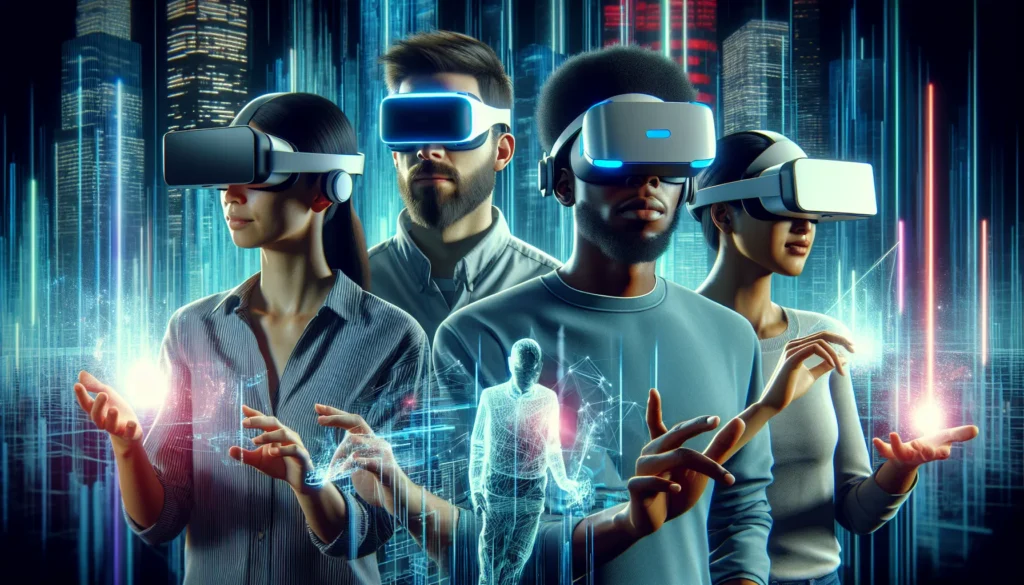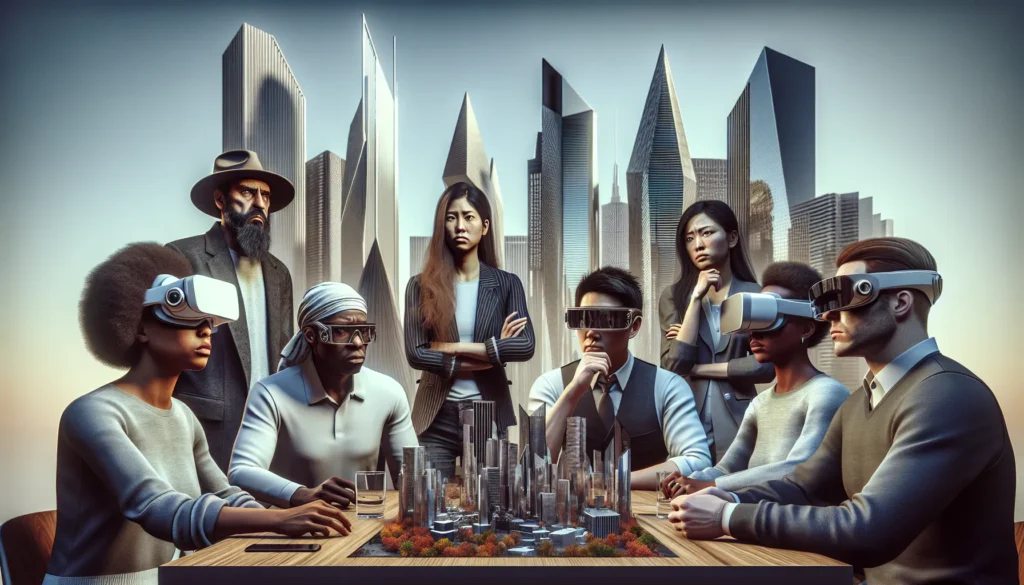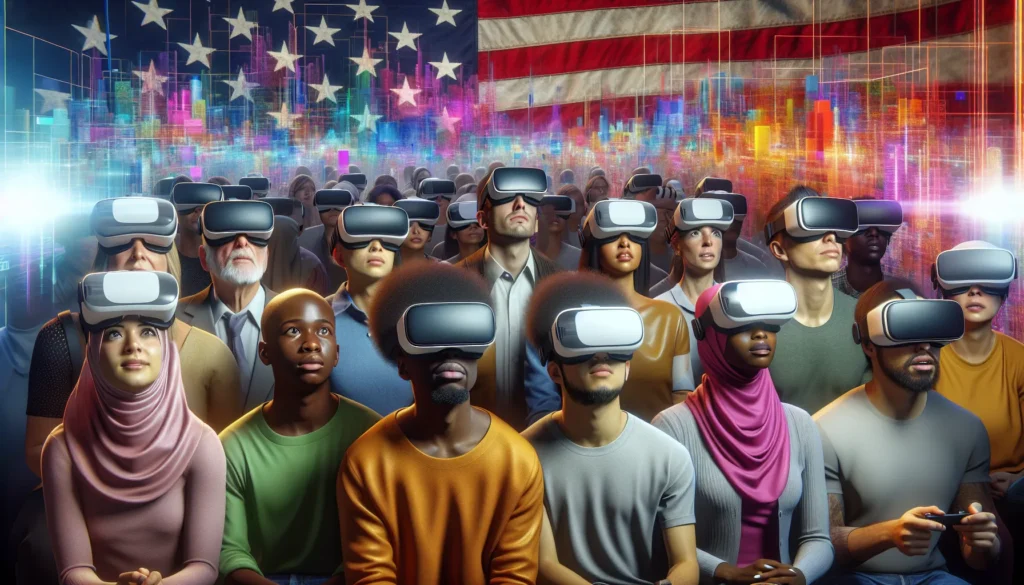The metaverse has captured the imagination of tech enthusiasts and businesses alike, promising a futuristic world where virtual and physical realities blend seamlessly. While it’s exciting to envision immersive digital experiences and limitless possibilities, it’s important to recognize that this innovation isn’t without its flaws. Beneath the hype lies a range of challenges that could impact how you interact with this evolving technology.
From concerns about privacy to the potential for social isolation, the metaverse presents issues that go beyond its glossy surface. Understanding these disadvantages helps you navigate its complexities and make informed decisions about your engagement. So, before diving headfirst into this virtual universe, let’s explore the less glamorous side of the metaverse and what it could mean for your digital future.
Understanding The Metaverse
The metaverse combines virtual and physical environments, creating an interconnected digital universe. It allows you to engage in activities like virtual socialization, gaming, shopping, and learning through immersive technologies such as AR and VR. This ecosystem relies on advanced hardware, software, and internet connectivity to function seamlessly.
Tech companies including Meta, Microsoft, and NVIDIA have heavily invested in building the metaverse. Their goal is to create persistent, shared virtual spaces where you can interact in real time. Blockchain technology often supports these systems, enabling decentralized ownership of digital assets like NFTs.
The metaverse promotes enhanced user experiences, but its structure depends on complex infrastructure. It requires high computational power, sophisticated data processing, and consistent digital interaction platforms. Understanding these elements is essential as they highlight both the innovative potential and the limitations of this virtual environment.
Privacy Concerns In The Metaverse

Engagement in the metaverse involves generating and sharing massive amounts of personal data. These interactions raise critical privacy issues, exposing users to multiple risks tied to data usage and ownership.
Data Security Risks
The metaverse collects vast datasets, including biometrics, voice patterns, and activity logs. Unauthorized access to this highly sensitive information can lead to identity theft or fraud. Hackers targeting these interconnected systems pose a substantial threat to individuals and organizations. The decentralized nature, often reliant on blockchain, doesn’t guarantee absolute protection since vulnerabilities exist in smart contracts and storage methods.
User Privacy Issues
Data collection in the metaverse is often invasive, encompassing user behavior, preferences, and even emotional responses. Companies may use this data for targeted advertising or other monetization efforts, potentially exploiting your personal information. Tracking in real-time environments further compromises privacy as users’ location and interactions are continuously monitored. If regulatory frameworks remain inadequate, users face limited control over how their data is shared or stored.
Economic And Social Impacts

The metaverse introduces significant economic and social challenges, affecting accessibility and equity across user groups.
High Costs Of Entry
Participating in the metaverse requires costly investments in hardware. Devices such as VR headsets, AR glasses, and high-performance computers often exceed budgets for average consumers. For instance, advanced VR headsets can range from $300 to $1,000, and maintaining the required internet bandwidth adds ongoing expenses. Developing and sustaining metaverse platforms demands substantial financial resources, which small businesses and individuals may struggle to afford. These financial barriers create unequal opportunities for users and organizations to benefit from the metaverse.
Digital Inequality
The metaverse widens the digital divide between those with access to technology and those without. Socioeconomic disparities limit access to essential hardware, software, and stable high-speed internet needed for immersive experiences. Many developing regions lack the infrastructure to support metaverse participation, excluding significant populations. These gaps perpetuate existing inequalities, with marginalized groups facing even greater challenges in accessing virtual opportunities, including remote work and education. This lack of inclusivity reinforces systemic barriers in both digital and physical economies.
Psychological Effects Of Metaverse Use

Engaging in the metaverse has notable psychological implications. Extended interactions within virtual spaces may lead to significant mental and emotional consequences.
Addiction And Overuse
Frequent use of the metaverse may result in compulsive behavior. Immersive environments, gamified content, and social engagement features often encourage prolonged usage, creating a dependency. This overuse can disrupt daily routines, reduce productivity, and affect real-world responsibilities. For instance, users focusing excessively on building virtual relationships or avatars might neglect meaningful face-to-face interactions and physical activities.
Impact On Mental Health
Participation in virtual worlds can negatively impact mental health. The metaverse’s hyper-realistic simulations may blur the line between reality and virtual spaces, causing disorientation or detachment from the physical world. Users prone to anxiety, depression, or loneliness could experience exacerbated symptoms due to feelings of inadequacy when comparing their real-life persona to idealized digital avatars. Additionally, cyberbullying and negative interactions within the metaverse can contribute to stress and emotional harm, further damaging mental well-being.
Impact On Real-World Relationships
Interacting within the metaverse alters how you connect with others, shifting focus away from real-world connections. These changes carry implications for personal and social relationships, impacting the quality of human interaction.
Reduced Face-To-Face Interactions
Spending significant time in the metaverse reduces opportunities for face-to-face communication. Engagement in virtual settings often replaces in-person connections, limiting your ability to interpret non-verbal cues like body language or facial expressions. For example, you may become reliant on avatars or digital representation, which fail to capture the depth of physical interactions. Over time, this reliance weakens interpersonal skills critical for maintaining meaningful real-world relationships.
Social Isolation Risks
Prolonged use of the metaverse increases the risk of social isolation, as virtual interactions may not fully compensate for actual human presence. If you prioritize virtual environments over real-life social settings, it can contribute to feelings of detachment and loneliness. Additionally, users engrossed in the digital world often neglect physical relationships, further exacerbating disconnection from friends or family. This isolation may significantly harm your emotional well-being and personal support network.
Technological Limitations
Technological barriers significantly hinder the widespread adoption of the metaverse. These challenges stem from issues with hardware, software, and the absence of unified platforms.
Hardware And Software Challenges
The metaverse relies on advanced hardware like VR headsets, AR glasses, and high-performance computers. These devices are costly, heavy, and prone to overheating, limiting accessibility for many users. Additionally, the development of lightweight, affordable, and energy-efficient equipment remains slow due to technical constraints.
On the software side, rendering immersive virtual environments requires powerful graphic engines and substantial computational power. Current internet speeds and bandwidth in many regions are inadequate for handling the real-time data transfer necessary for seamless experiences. Furthermore, bugs, compatibility issues, and frequent updates in software create frustrations for users and developers, restricting efficient metaverse usage.
Lack Of Standardized Platforms
The metaverse comprises diverse platforms, but there’s no universal framework connecting them. Each system functions within its ecosystem, making cross-platform compatibility nearly impossible. For example, virtual assets or avatars used in one platform often can’t transfer to another due to proprietary standards.
This fragmentation creates a disjointed user experience and slows innovation. Without standard protocols or interoperability, users and developers face increased costs and inefficiencies when adapting to different systems. Overcoming this lack of standardization is critical for the metaverse’s long-term functionality and user adoption.
Conclusion
While the metaverse offers exciting possibilities, it’s essential to approach it with a clear understanding of its challenges. From privacy concerns and accessibility barriers to mental health impacts and technological limitations, these drawbacks highlight the complexities of this emerging digital frontier.
As you explore the metaverse, staying informed and mindful of its potential risks ensures you can make balanced decisions about your engagement. Balancing innovation with responsibility will be key to navigating this evolving virtual landscape.
Frequently Asked Questions
What is the metaverse?
The metaverse is a virtual world that combines digital and physical realities, where users can interact, socialize, game, shop, and learn through immersive technologies like augmented reality (AR) and virtual reality (VR).
Which companies are investing in the metaverse?
Major tech companies like Meta (formerly Facebook), Microsoft, and NVIDIA are investing in the metaverse to develop shared virtual spaces and support decentralized ownership of digital assets like NFTs.
What are the main privacy concerns with the metaverse?
The metaverse collects significant personal data from users, raising concerns about privacy, identity theft, unauthorized access, and invasive data tracking for targeted advertising. Weak regulations exacerbate these risks.
How does the metaverse affect mental health?
Extended use of the metaverse can result in anxiety, depression, loneliness, and compulsive behavior. Cyberbullying and over-reliance on virtual interactions can further harm emotional well-being.
Is the metaverse accessible to everyone?
No, the metaverse is expensive to access due to costly VR devices and high-performance computers, creating financial barriers and widening the digital divide, especially for marginalized or developing communities.
What technological challenges hinder metaverse adoption?
The metaverse faces issues like expensive, bulky hardware, the need for powerful graphic engines, internet speed requirements, and lack of standardization, leading to platform fragmentation and slowed innovation.
Can the metaverse replace real-world relationships?
The metaverse cannot fully replace real-world connections. Prolonged use reduces face-to-face communication, weakens interpersonal skills, and increases social isolation, causing feelings of detachment and loneliness.
What are the risks of social isolation in the metaverse?
Spending excessive time in virtual worlds decreases meaningful physical interactions, which can lead to isolation, weakened relationships, and an over-reliance on avatars that lack real emotional depth.
How does the metaverse impact digital and physical economies?
The metaverse creates economic disparities due to high financial costs, making it inaccessible for many. It may also reinforce systemic inequalities by favoring those with advanced technology or resources.
What infrastructure is required for the metaverse?
The metaverse relies on advanced hardware like VR headsets, AR glasses, powerful graphic engines, fast internet, and blockchain technologies for decentralization and secure digital asset management.

